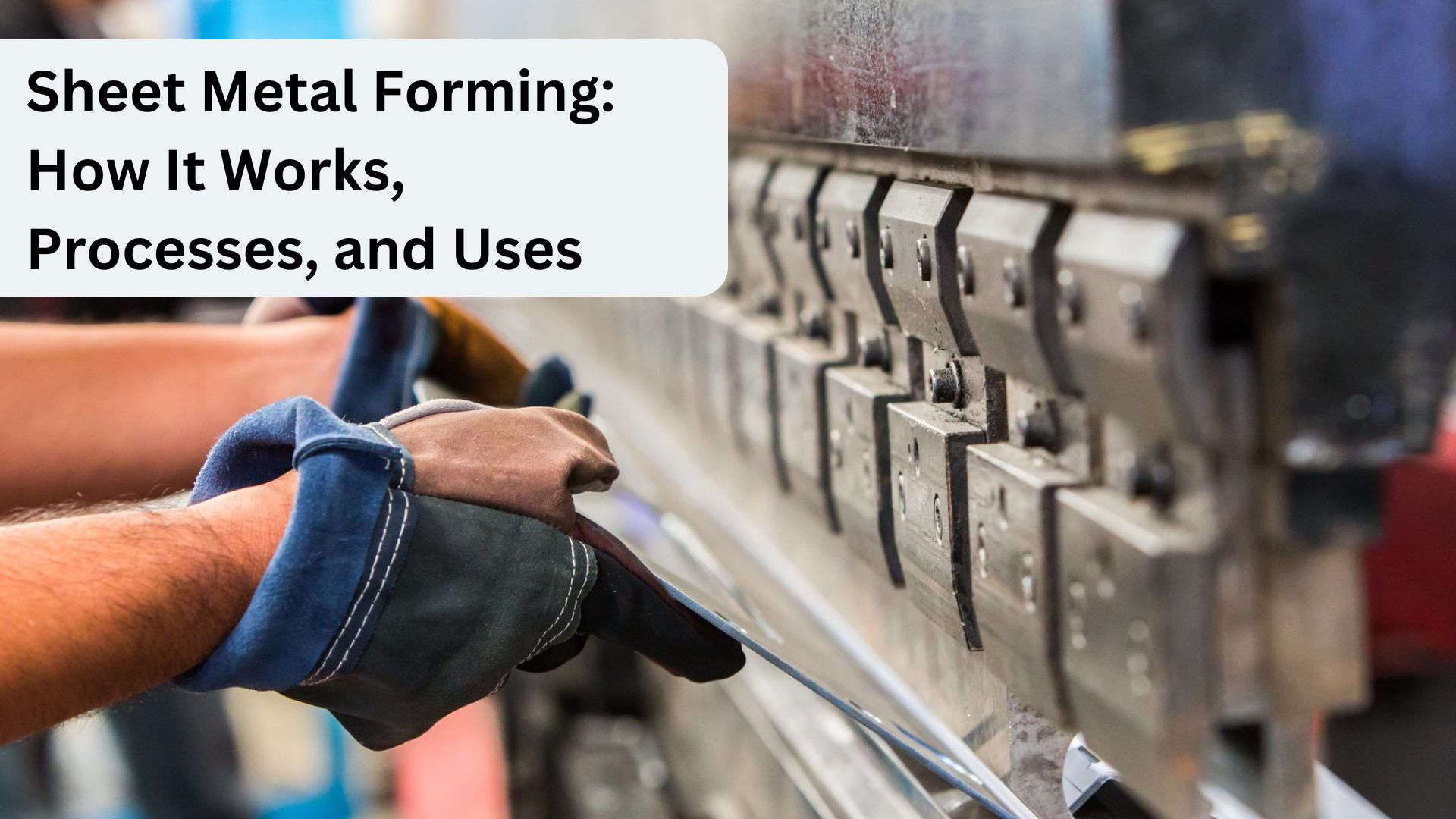
Do you ever see complex metal shapes and wonder how they are formed and achieved? You might not unless you are a DIY metal enthusiast. You can relate if you work around metals. Isn’t it amazing how such intricate shapes can be formed from such hard metals?
This is where sheet metal forming comes into play. It is a pivotal manufacturing process used in varied industries, and why not? Molding metal into various shapes and sizes is essential for creating components across multiple manufacturing industries.
This blog will discuss sheet metal processing, its uses, how it works, etc.
How does Sheet Metal Forming Work?
Sheet metal forming involves multiple metal fabrication methods, such as sheet metal bending, cutting, shearing, etc., and deformation is achieved with various tools and techniques. This is achieved by applying forces that exceed the metal’s yield strength, causing it to plastically deform without breaking. The secret is to ensure that the structural integrity of the metal is maintained without breaking it so the desired bends and shapes can be achieved.
The process begins with a flat sheet of metal sheared into smaller pieces. Depending on the project specifications, these sheets can be made of any metal, including aluminum, copper, steel, etc. Based on the prototype, the sheets are bent, stretched, punched, and notched to deform them.
Key Sheet Metal Forming Processes
Here are the key methods which are used in sheet metal forming:
Sheet Metal Shearing
Shearing is the process of cutting the metal sheet into smaller parts. Employing high-end shearing machines ensures that the metal is cut smoothly without any jagged edges.
Many companies purchase sheared sheets to skip the metal shearing step
Sheet metal bending is the simplest yet widely used sheet metal forming process. It involves applying a force to a metal sheet to bend it at a certain angle. The material’s thickness, bend angle, and other factors are considered to ensure that the material doesn’t crack at the seams. Components such as brackets, frames, enclosures, etc., are created when bent at precise angles.
Deep Drawing
Deep drawing is the process of radially feeding the metal into a forming die, and a punch forms the metal into the desired shape. It typically creates hollow or cylindrical parts, such as cans, pots, and automotive fuel tanks.
Stretch Forming
Stretch forming is the process of stretching sheet metal while bending it simultaneously to give it the desired shape. This process is useful in the automotive industry for forming components such as car roofs. It is also used in the aerospace industry to create wing panels and fuselage sections. It minimizes material waste and also gives excellent control over the final shape.
Stamping
Stamping is a metal fabrication process that uses a die to form shapes or symbols into metal. It is a cold-forming method wherein metal is fed into the machine, and the die is stamped on it to create the desired shape. Processes such as punching, coining, blanking, etc., are all parts of stamping.
Roll Forming
In roll forming, a long metal sheet is fed through a series of rolls to create a cylindrical or cross-sectional shape. This process is ideal for producing long lengths of metal parts with consistent cross-sectional shapes, such as rails, beams, and channels.
Uses and Applications
The different uses and applications of sheet forming are discussed below:
Automotive Industry
In the automotive industry, sheet metal forming creates body panels, chassis components, structural parts, etc.
Aerospace Industry
In the aerospace industry, large metal components are created using sheet metal forming, which helps minimize metal waste. The precision and strength of stretch forming have made it indispensable for sheet metal forming.
Electronics Industry
The electronics industry requires a method to create multiple brackets, panels, heat sinks, enclosures, etc., which are created using sheet metal forming.
Consumer Goods
The consumer goods industry is vast, and products are highly demanded. Thus, sheet metal forming is used to create varied products, including kitchen appliances, furniture, tools, etc.
Final Words
Sheet metal forming consists of many metal fabrication processes which complement each other to achieve the end products. Investing in the best tools and knowledgeable staff is necessary to achieve perfection.
At AZ Metals, we are committed to offering you the best quality products and services. We serve both retail and wholesale clients. Over the years, we have invested in state-of-the-art machines and a knowledgeable staff, which has made us the best metal service provider in Mesa and Phoenix.
For more information about our services, contact us!
